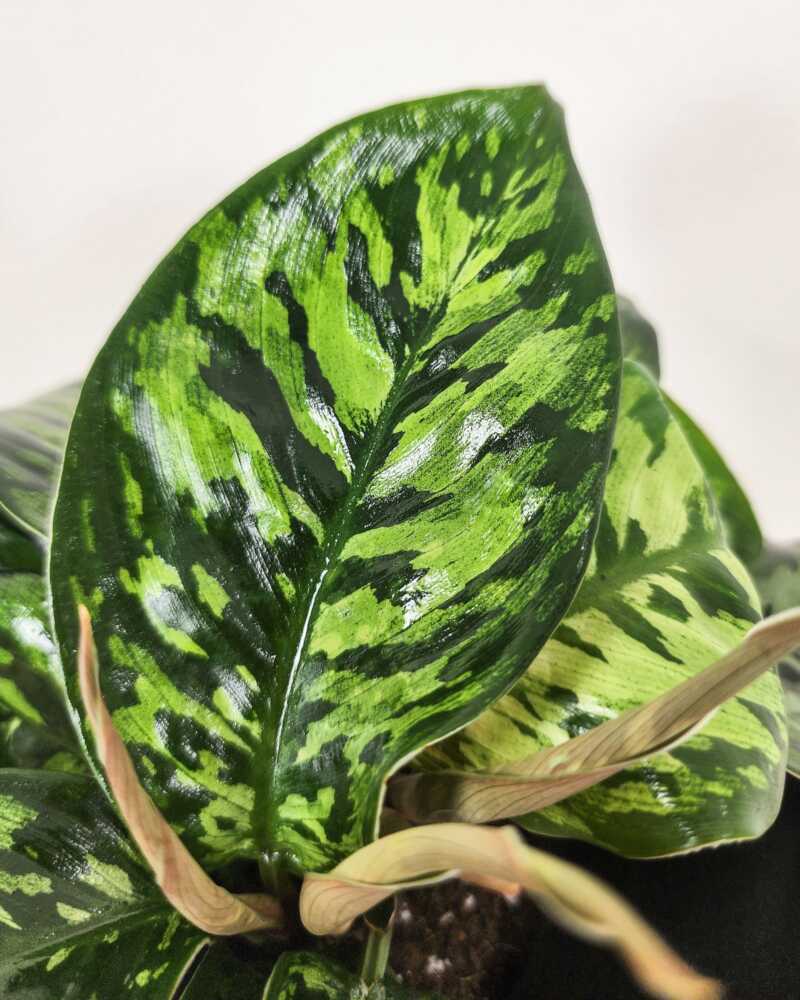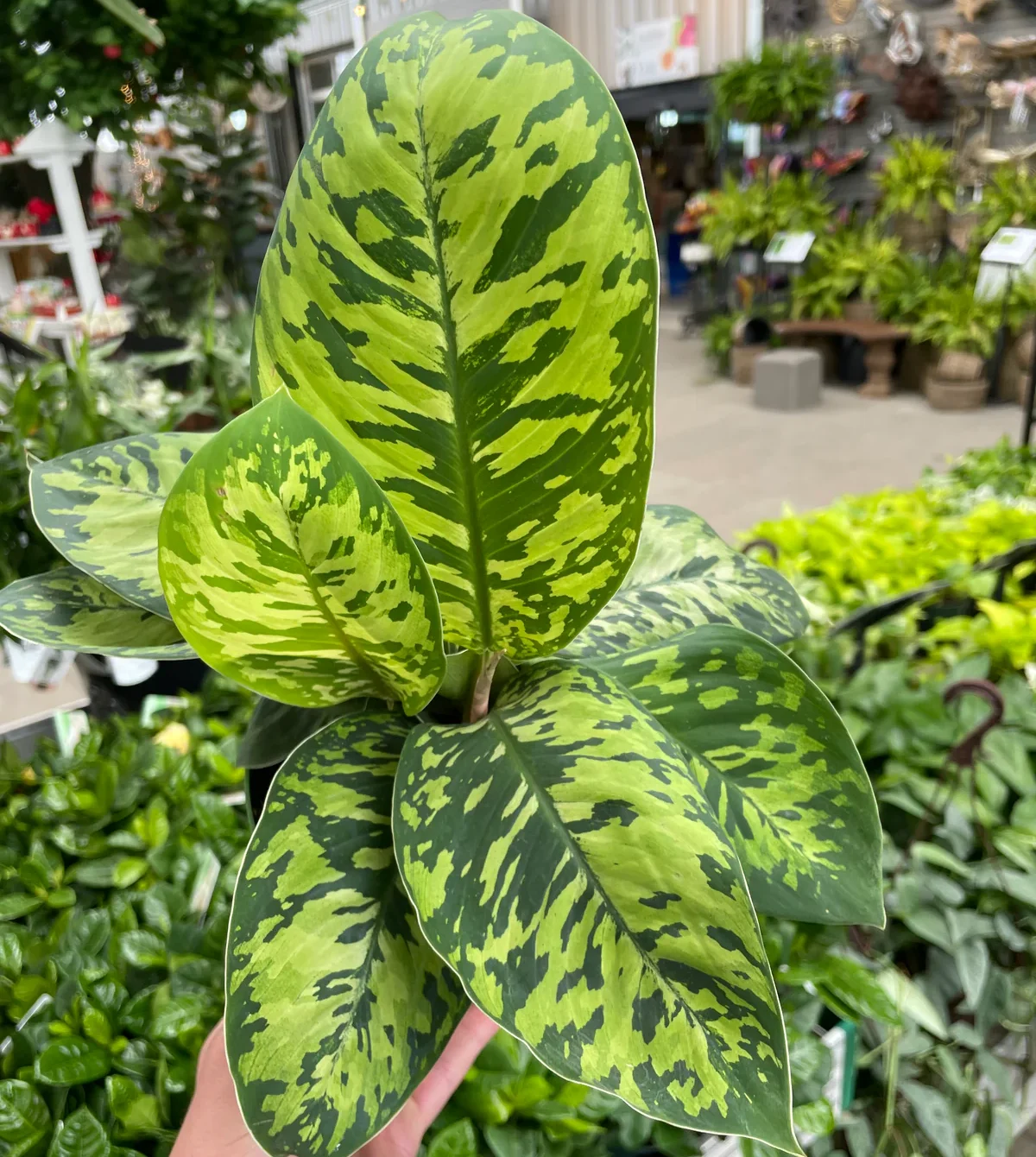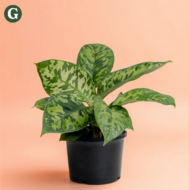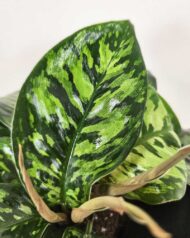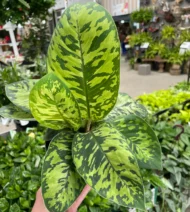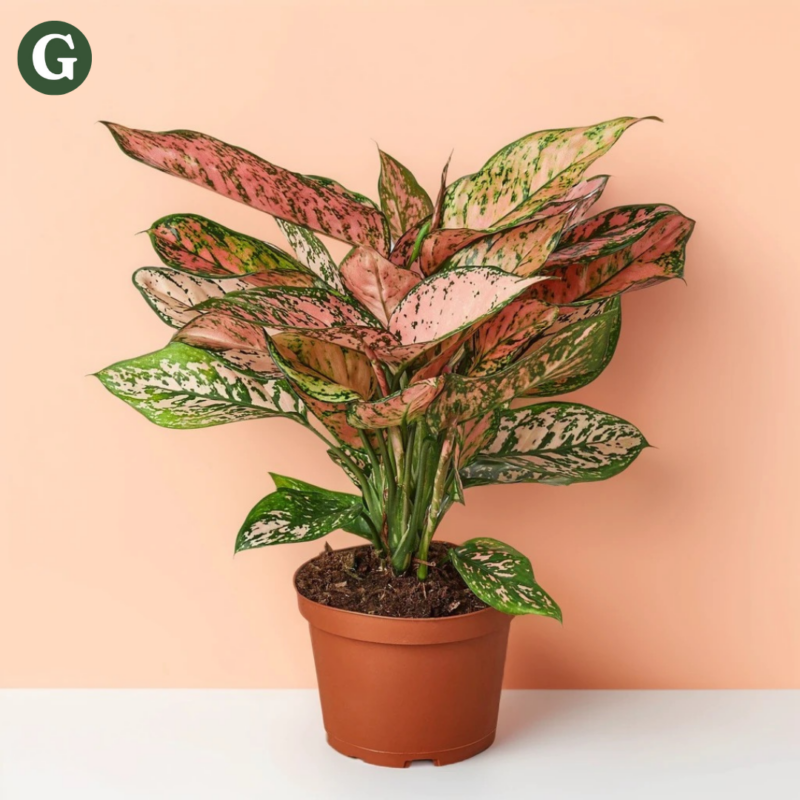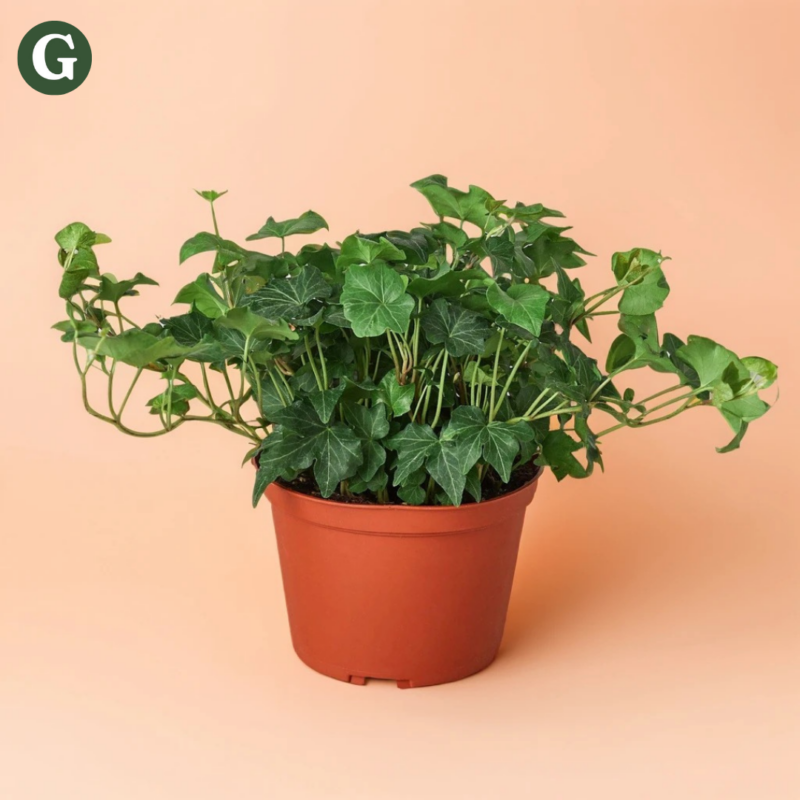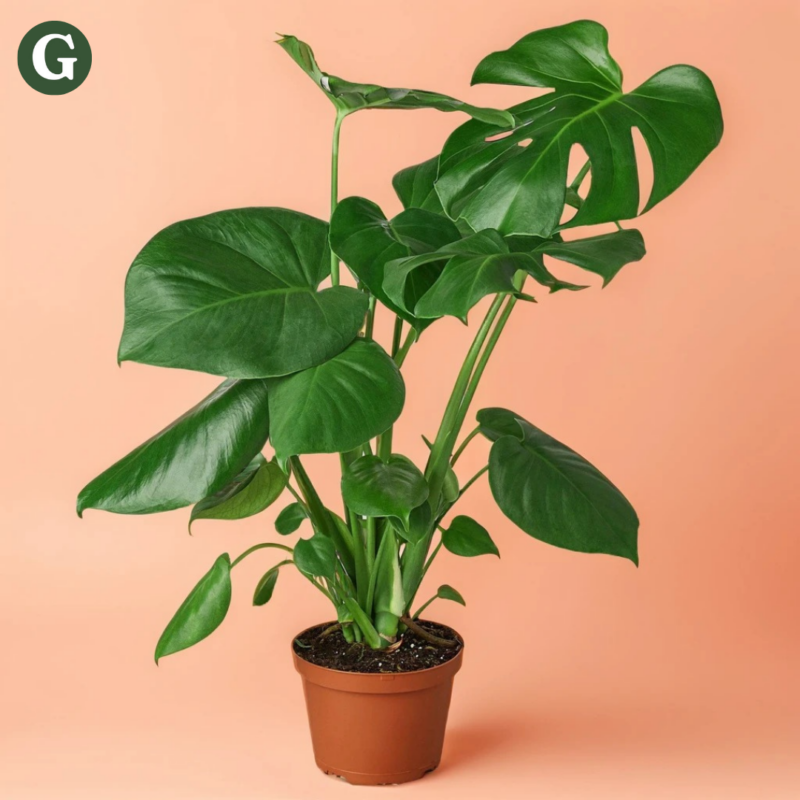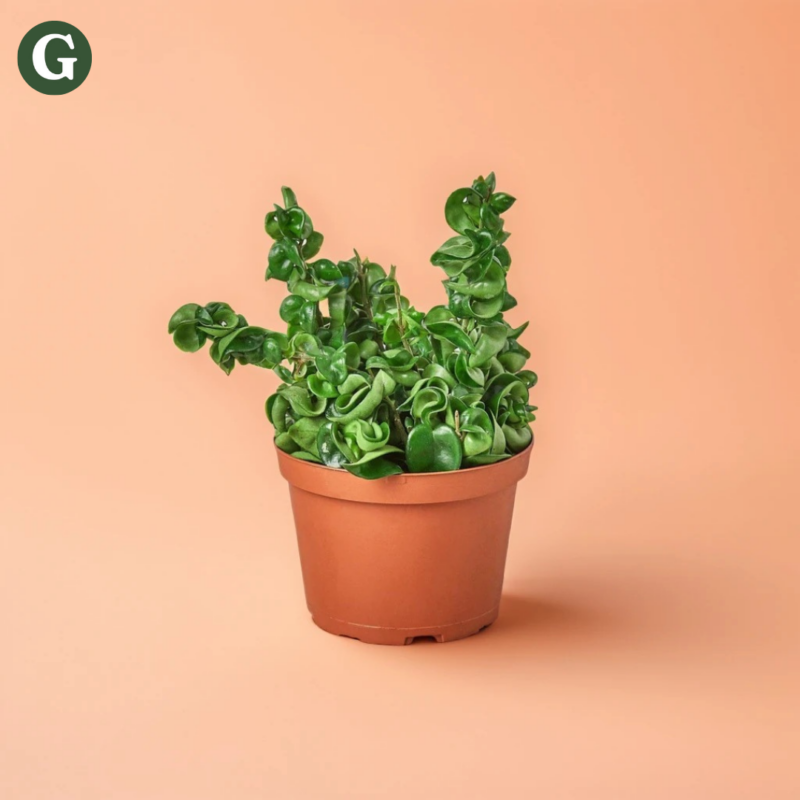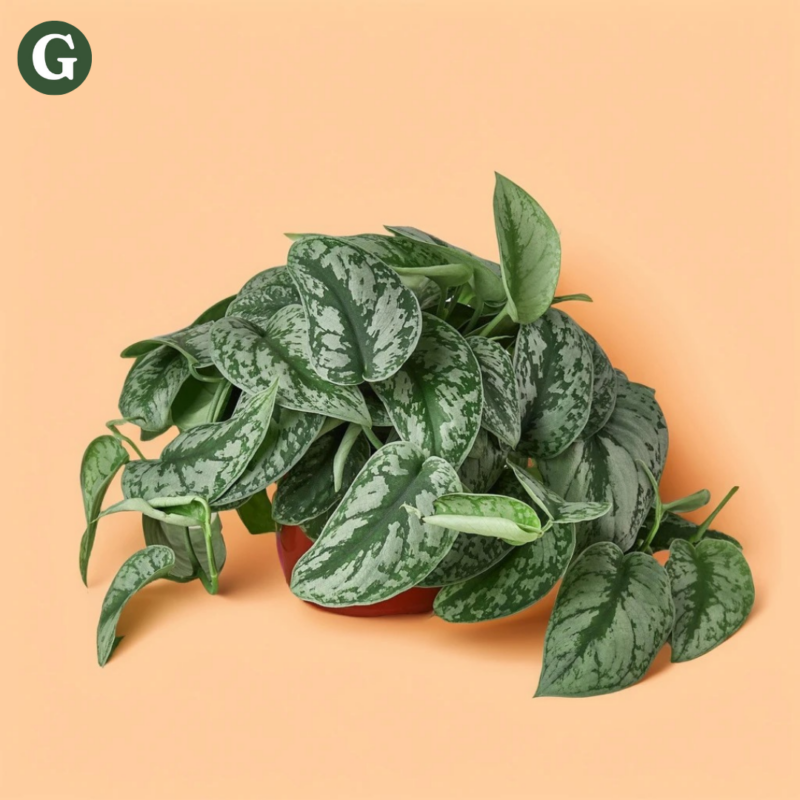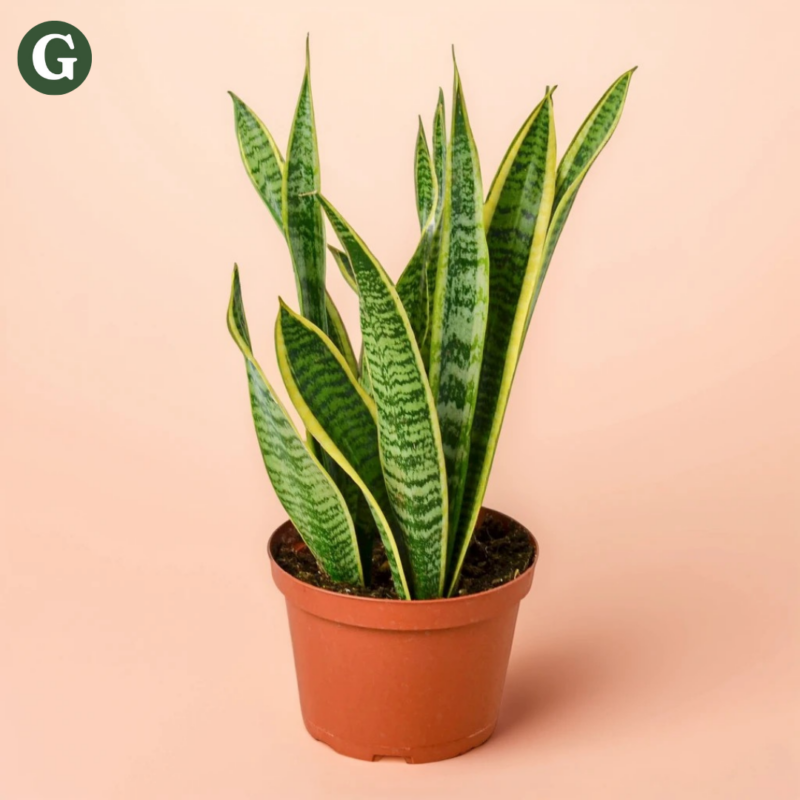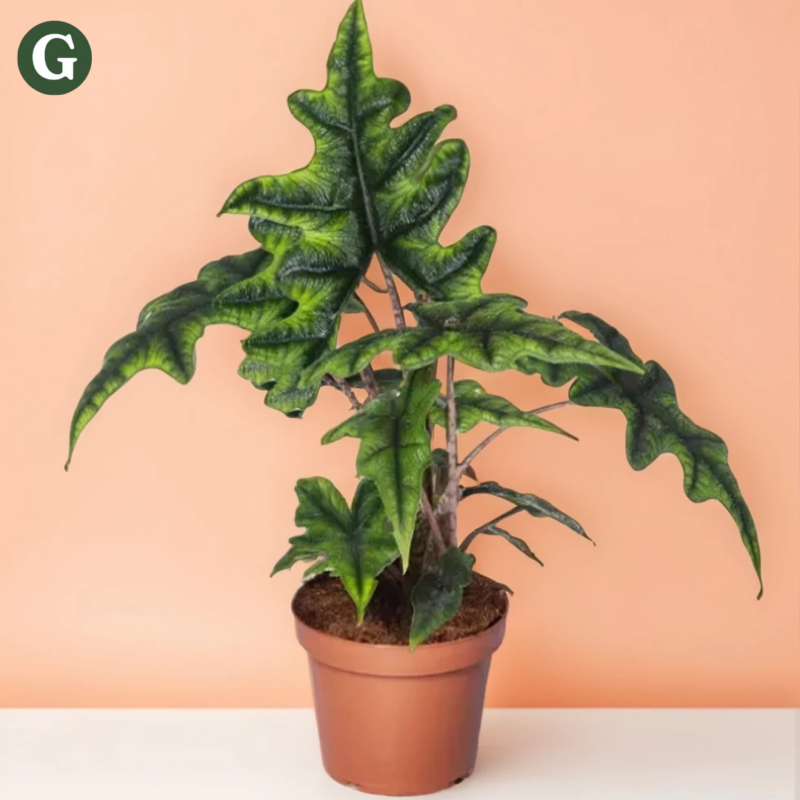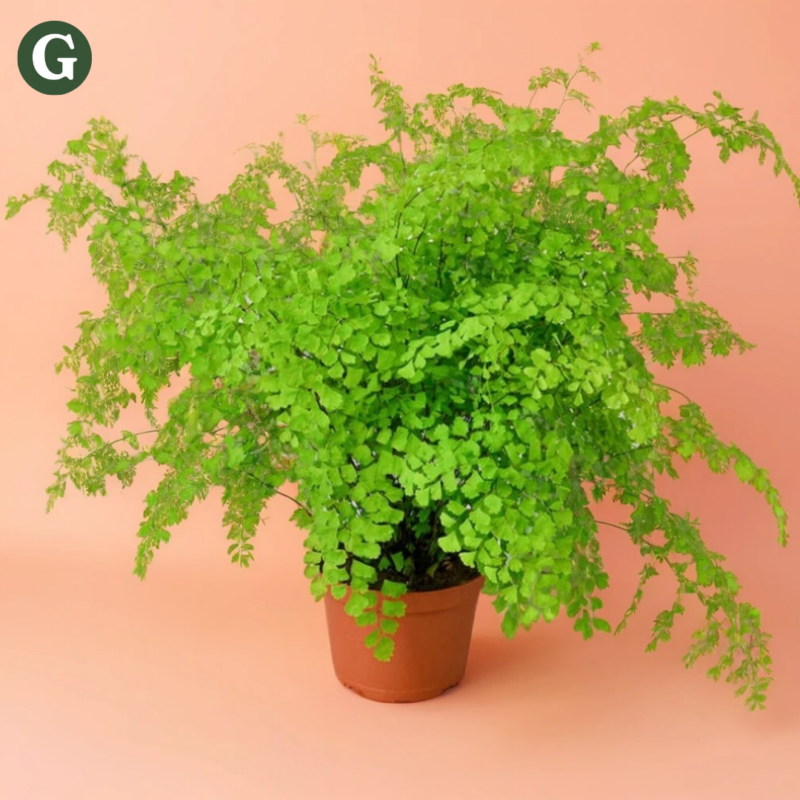Homalomena ‘Camouflage'
Botanical Name: Homalomena 'Camouflage'
Common Name(s): Camouflage Homalomena, Camouflage Plant
The Homalomena Camouflage is an attractive and easy-to-care-for houseplant, known for its striking, patterned foliage. It is native to the tropical regions of Southeast Asia, where it thrives in the understory of rainforests. This variety is particularly valued for its unique, mottled leaf appearance, which features a blend of deep green and silvery-gray markings that resemble a camouflage pattern. The contrast in coloration gives the plant a modern and decorative look, making it a popular choice for interior spaces. Its air purifying nature can eliminate indoor air pollutants like benzene.
It typically grows to about 12-18 inches in height, with a bushy, upright growth habit, making it suitable for tabletops, desks, or small spaces. Its heart-shaped leaves are thick, glossy, and leathery in texture, adding to the plant's lush, tropical aesthetic. This Homalomena is well-suited to a variety of lighting conditions and can tolerate lower light levels, though it thrives in bright, indirect light. In low light, the plant's growth may slow down, and the foliage may lose some of its vibrant patterns. Its a great choice for adding interest to vertical spaces or as part of a mixed plant display.
Air Purifying Qualities:
Toxin Removal: The Homalomena Camouflage is effective at removing indoor pollutants such as formaldehyde, benzene, and toluene, helping to purify the air in your home or office.
Oxygen Enhancement: Like other houseplants, the Homalomena Camouflage contributes to improving indoor air quality by releasing oxygen during photosynthesis, creating a fresher, healthier atmosphere.
Humidity Regulation: Through natural transpiration, this plant adds slight moisture to the air, which can be especially beneficial in combating dry indoor conditions.
Note: The Homalomena Camouflage is toxic to pets, including cats and dogs, if ingested. It contains compounds that can cause digestive upset, so it's important to keep the plant out of reach of curious pets.
Care Insights & Expert Tips
- Repotting: Repot every 2-3 years, or when the plant becomes root-bound.
- Pruning: Prune off any damaged or dying leaves to maintain the plant's health and appearance.
- Fertilize once a month: Feed your plant with a balanced liquid fertilizer diluted to half strength once a month during the growing season.
- Avoid drafts: Avoid placing the plant near cold drafts or air conditioning vents.

Visit our plant care library
Find essential tips to keep your plants thriving, vibrant, and healthy.

